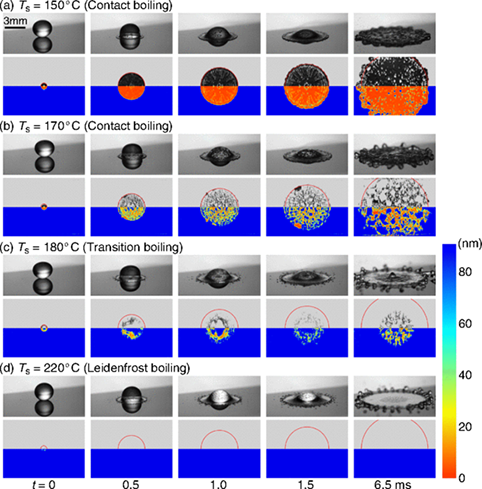A joint research from Center for Combustion Energy at Tsinghua University and Physics of Fluids at University of Twente gives better understanding of the dynamic Leidenfrost effect.
Heat transfer from solid surfaces to impacting liquid droplets plays an important role in many industrial technologies such as power electronics cooling, spray cooling, engine performance, and pollutant emissions. When a liquid droplet impacts a hot solid surface, enough vapor may be generated under it to prevent its contact with the solid. The minimum solid temperature for this so-called Leidenfrost effect to occur is termed the Leidenfrost temperature, or the dynamic Leidenfrost temperature when the droplet velocity is non-negligible. A quantitative physical understanding of the dynamic Leidenfrost phenomenon is still lacking. For the first time, researchers of the Center for Combustion Energy at Tsinghua University and the Physics of Fluids group at the University of Twente have made records of the 100-nm thick vapor layer beneath the droplet, when it impacts on the surface (see the figure below). Thanks to this work, a more detailed explanation of the dynamic Leidenfrost phenomenon becomes possible. The researchers conclude in their publication in Physical Review Letters.

M. Shirota, M. A. J. van Limbeek, C. Sun*, A. Prosperetti, and D. Lohse,
Dynamic Leidenfrost effect: relevant time- and length-scales,
Phys. Rev. Lett. 116, 064501 (2016). DOI: 10.1103/PhysRevLett.116.064501


